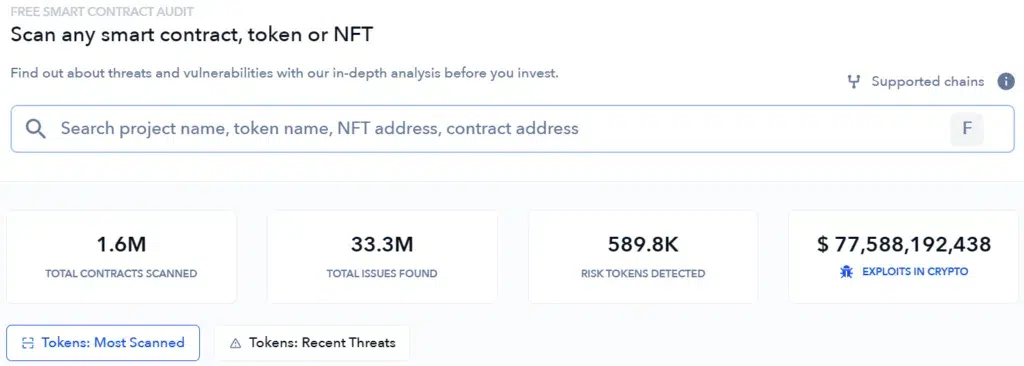Honeypot crypto scams have been trapping millions of dollars from not only crypto-hungry bears that can’t resist honey but everyone who ever played on decentralized exchanges. In this article, we will delve into what exactly the term means and how we can spot it and not get stuck with our hand in the honeypot and more importantly protect our investments.
- What Is a Honeypot Crypto Scam in Cryptocurrency?
- What Are Examples of a Honeypot Crypto Scam and How Do They Work?
- How Can You Spot and Avoid the Honeypot Crypto Scam?
- Don’t Trust Anyone Who Shares His Seed Phrase
- Look at the Transaction History
- Unexpected Dms on Social Media
- Remain Ethical
- Steer Clear of “Too Good to Be True” Opportunities
- How Does ‘De.Fi’s’ Honeypot Checker Work?
- What Should I Do if I Think I’ve Encountered a Scam?
- Conclusion
A honeypot crypto scam refers to traps set by scammers to trick users into interacting with fraudulent wallets, contracts, exchanges, or tokens in order to steal their funds. These scams work by making something look highly exploitable or profitable, luring in victims with promises of easy money. But when users interact with the honeypot, their funds get drained.
What Is a Honeypot Crypto Scam in Cryptocurrency?
So what is a honeypot crypto scam? Well, the name says a lot. They are considered rug pulls but are a little different. A honeypot crypto scam lure their victims in with the false promise of easy profits.
They will make a cryptocurrency wallet or smart contract look very exploitable, also known as decoy wallets or smart contracts, in the hopes that victims will interact with them and lose their funds. Scammers would insert a code to their decoy wallet addresses or smart contracts.
But it can also be that a scam platform lets users and investors purchase their tokens but disables the selling of these tokens. Now the user has a token but is unable to sell it onto the market. One way to know you are in a situation like this and are unable to sell is when there is a string of buys but hardly any sales.
The price chart usually shows only an uptrend on low or no volume. This is the scammer baiting investors into buying it, ,and smearing honey all over. When the price has appreciated quite well, the scammer will start selling their tokens, crashing the price and gaining illicit profits. You get left behind with nothing to show for than worthless tokens.
What Are Examples of a Honeypot Crypto Scam and How Do They Work?
Let’s discuss the modus operandi of the honeypot crypto scam and the different ways of the scammer that get classified as such;
Fake Smart Contracts
We see that scammers deploy “bait” smart contracts that contain a exploitable bug and vulnerability.
The unexpected victims see an opportunity to make a profit and are tricked into sending funds to exploit the error in the contract. But what happens is that these funds get automatically sent over to the scammers wallet, even before any tokens can be extracted.
Fake Crypto Exchanges
The same goes for, fake exchanges or wallet services that pop up here and there, and are also considered honeypot crypto scam. They are advertised massively on social media and trick victims into providing funds or private details such as seed phrases.
Fake Crypto Wallets
Another common scenario:
- A scammer will contact the victim posing as someone needing help with their wallet. They will share the seed phrase, and encourage the victim to access the wallet.
- The wallet most of the time will contain some valuable tokens, usually in a token other than the native currency. The victim, thinking he has the upper hand, will be tempted to transfer these tokens.
- But when the victim sends a small amount of the native currency to pay the gas fee, a script automatically sweeps these funds out of the wallet.
How Can You Spot and Avoid the Honeypot Crypto Scam?
Well, we give you a few tips to avoid getting stuck in a honeypot crypto scam. While some of these tips are not more than common sense, we just like to emphasize on them more clearly.
Don’t Trust Anyone Who Shares His Seed Phrase
Legitimate wallet users would never share their only way to get to their wallet, especially if there are a lot of tokens in it of great value. Never share your own and never access other users’ wallet seed phrases, especially these of random guys online.
Look at the Transaction History
If you get a closer look at the transaction history of that particular wallet you want to send funds to, done by one of the many blockchain explorers, you will see that all transactions will be outbound. Deposits are usually followed by sweeps within seconds of receiving them.
Unexpected Dms on Social Media
The people who are trying to scam you, often contact their victims through private messages on platforms like X (previously Twitter) and Telegram. They will offer some information and too good to be true returns. Stay wary of unsolicited messages.
Remain Ethical
This is the most important one! Ask yourself; if a scammer gets scammed, is it even scamming? Meaning if you want to exploit a contract or a wallet, but lose your funds in the process, who was scamming who? Well in all cases it is best to remain ethical and resist the temptation to exploit others’ mistakes. Assume that if something looks exploitable, it is probably a scam designed to part you from your funds.
Steer Clear of “Too Good to Be True” Opportunities
At last, this comes down to everything in life, and avoid interacting with anything that promises ‘too damn’ high returns. If it quacks like a duck and walks like one, it probably is a duck. So if you feel the temptation do not approach further. You will get scammed and will lose all your money. You have to be skeptical of opportunities that seem too good to be true.
Discover how massive Ponzi schemes and exit scams have damaged crypto’s reputation over the years.
How Does ‘De.Fi’s’ Honeypot Checker Work?
If you want help from professionals to do the scanning for you, you can make use of the free De.Fi contract scanner. This is a honeypot crypto scam checker tool that analyzes smart contracts to detect if they have characteristics of a “honeypot”.

De.Fi’s Scanner tool allows users to check any smart contract address for honeypot risks. It performs a thorough audit in seconds and will display common red flags and examines the code behavior. This is quite handy if you want to check for other vulnerabilities like ownership issues, exploits, and risky tokenomics.
What Should I Do if I Think I’ve Encountered a Scam?
If you believe you have been duped by a fraudulent wallet or other honeypot crypto scam, you can report it to the blockchain explorer (like Etherscan) for further review. It’s also recommended to warn others online or in your network about the scam and help prevent future victims losing all their tokens.
Our article explores realistic ICO risks and provides tips to perform due diligence on token sales.
Conclusion
A honeypot crypto scam is a deceptive type of fraud where scammers set traps disguised as lucrative opportunities. These opportunities range from token sales, compromised wallets, and exploitable smart contracts to investment opportunities. What the victims don’t know is that they are the ones being exploited and not the other way around. Whether you are a bull or a bear in crypto, do not get stuck in the honeypot crypto scam.




















